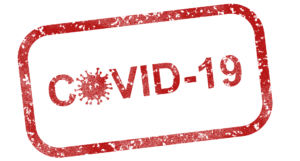
COVID SAFETY PRECAUTIONS
As of August 2024, this is the new Covid-19 Policy at NECCS

The threat of Covid 19 is lessened even though it remains a serious concern.
The CDC has taken a unified approach as it relates to the prevention of the spread of these respiratory viruses since they have similar transmission methods. COVID UPDATE
This new guidance consolidates and simplifies previous recommendations intended specifically for K-12 school settings. It replaces previous guidance that was for COVID-19 and influenza in schools, is aligned with CDC’s respiratory virus guidance, and is based on scientific studies that showed what works best to prevent the spread of many common respiratory and stomach infections. These strategies can also reduce the spread of many other infectious diseases in schools.
Newark Educators Community Charter School (NECCS) will comply with official state and CDC guidelines, including the universal and correct wearing of masks over the school day for all students and staff.
Returning From Winter Break
We wanted to communicate the measures we are taking to ensure the health and safety of our school community. NECCS is preparing for a safe return after any break. Upon your return to school from break on we may request you provide a copy of your scholars’ test. This should be submitted upon entry. In addition, please contact your campus main office if you have any questions. Specific requirements will be communicated to the families regarding each break. Thank you in advance for helping our school community be healthy and safe, given the conditions we see in the city of Newark and Essex County.
Face Masks
Facial coverings are recommended by both the Centers for Disease Control and Prevention (CDC) and World Health Organization (WHO) as a strategy to reduce the risk of transmission. Facial coverings act as a barrier to prevent the spread of respiratory droplets.
Protocols for wearing face masks include
- ALL employees, students, visitors, and anyone entering our school will be required to wear a face mask covering both the mouth and nose.
- Students and staff must arrive at school and work with a mask.
- No one will be allowed to enter the building without a mask.
- Face masks may be removed during meal times or recess, as long as social distancing is maintained.
- Good masks include disposable surgical masks or cloth masks.
In general, students or staff do not need to wear masks outdoors, including during outdoor physical education classes or school sports. However, we encourage using masks during outdoor activities that involve sustained close contact with other individuals or during periods of high community transmission.
Physical Distancing in Schools
Physical distancing is another essential part of our multi-layered strategy to keep our school communities safe. The Centers for Disease Control and Prevention (CDC) recommends schools maintain at least 3 feet of physical distance between students within classrooms to reduce transmission risk.
Ventilation
Good ventilation is essential to prevent COVID-19. Over the past year and a half, ventilation in every single class has been inspected, updated, and repaired as needed. Every room in use by students and staff for extended periods will have fully operational ventilation through either natural, mechanical, or a combination of means.
Traveling through COVID
While there is no statewide travel advisory or mandate in place at this time, we are encouraged to have a policy for exclusion for students and staff that travel that is consistent with CDC COVID-19 travel recommendations. The CDC recommends that travel be delayed for those not fully vaccinated. If travel cannot be delayed, domestic and international travelers who are not fully vaccinated should get tested with a viral test 3-5 days after travel AND stay home and self-quarantine for a full seven days after travel, even if they test negative. If testing is not completed post-travel, individuals should self-quarantine for ten days. International travelers who are fully vaccinated should also get a viral test 3-5 days after travel, self-monitor for symptoms, and isolate and get tested if symptoms develop.
Positive Cases: Closure and Quarantine
Difference between: Quarantine and Isolation
- You are quarantined when you might have been exposed to the virus by someone who tested positive for the virus. Quarantine time is recommended if you have been in close contact (within 3 feet (children) and 6 feet (adults) of someone for a cumulative total of 15 minutes or more over 24 hours) with someone who has COVID-19 and you are NOT fully vaccinated. You should monitor yourself and monitor symptoms.
- You isolate yourself when infected with the virus, even if you don’t have symptoms. Isolation is recommended for anyone who tested positive for COVID-19.
Appropriate time frames – Isolation
Isolation (ADULTS) Once an adult person has tested positive for COVID-19 they must stay home for 5 days to isolate. If symptoms do not persist they can return back to work and continue to wear a mask indoors and in public. If a person’s symptoms persist they must then continue their isolation for up to (10) ten days.
Isolation (CHILDREN) Once a child has tested positive for COVID-19 they are being asked to stay home for 10 days to isolate. If symptoms do not persist they can return back to school on day 11 and continue to wear a mask indoors and in public. Guardians must make the school aware of these findings and work will be provided to the child that will be turned into the teacher and recorded as attendance.
Appropriate time frames – Quarantine
Quarantine (ADULTS) :
Fully vaccinated: NO quarantine time is needed unless you start to show symptoms. However, fully vaccinated people must be tested 5-7 days after their exposure, even if they don’t have symptoms, and continue to wear a mask indoors in public.
Non-vaccinated: individuals that are considered to have had close contact must quarantine for 5 days while monitoring their symptoms throughout this time and notifying the school if anything changes. If they experience no symptoms after the 7th day, they can return to work without a negative test and show no fever/symptoms. They must continue to wear a mask indoors and in public.
Quarantine (CHILDREN):
Fully vaccinated: NO quarantine time is needed unless you start to show symptoms. However, fully vaccinated people must be tested 3-5 days after their exposure, even if they don’t have symptoms, and continue to wear a mask indoors in public.
Non-vaccinated: individuals that are considered to have had close contact must quarantine for 5 days while monitoring their symptoms throughout this time and notifying the school if anything changes. If they experience no symptoms after the 7th day can return to work without a negative test and show no fever/symptoms. And continue to wear a mask indoors and in public. Students that are not able to properly mask, may not return to school until the full 10-day quarantine has expired.
Close contact scenarios
- Any student within three feet of a student with COVID-19 in the classroom regardless of wearing a face covering.
- Any student who was within six feet of a student with COVID-19 when either student was unmasked,
- Any student or adult within six feet of an adult with COVID-19 for more than ten minutes regardless of wearing a face covering.
In our indoor classroom setting, the close contact definition excludes students who were within 3 to 6 feet of an infected student where both the infected student and the exposed student(s) correctly and consistently wore well-fitting masks the entire time.
Enhanced Cleaning and Disinfection Protocols
Our school will be cleaned frequently throughout the day, paying close attention to cleaning and disinfecting high contact areas and in the evening using electrostatic disinfecting machines and backpack misting machines will continue to be used. Teachers and students will work together with custodial staff to promote a clean and healthy environment for everyone within each building. Each classroom will have sanitation kits that will include gloves and disinfectant wipes.
Meal and Food Distribution
For meals offered in cafeterias where masks may not be worn, we will provide as many-layered prevention strategies as feasible to help mitigate the spread of COVID-19. These include
- Maximize physical distance as much as possible when moving through the food service line and while eating (especially indoors)
- Consider alternatives to the group dining areas such as eating in classrooms or outdoors; stagger eating times allow physical distancing.
- Maintain students in cohorts and limit mixing between groups if possible; avoid offering self-serve food options. Discourage students from sharing meals.
- Encourage routine cleaning between groups.
- Frequently touched surfaces should be cleaned. Surfaces that come in contact with food should be washed, rinsed, and sanitized before and after meals.
Breakfast:
- Pre-Kindergarten to grade 4, breakfast will be delivered by food service personnel and placed outside the classroom door before students entering the classroom.
- All utensils and foodservice items will be disposable.
- Students will wash their hands or use hand sanitizer before and after meal consumption.
Lunch:
- Prekindergarten and Kindergarten lunches will be delivered by foodservice personnel and placed outside the classroom door.
- Following social distancing protocols, students in 1-4 will pick up individual lunches from the cafeteria. These meals will be consumed in the cafeteria. Each grade will have lunch staggered.
Outdoor Recess Procedures
Recess will be staggered throughout the school day as reflected in the daily schedule. The support staff will supervise recess to ensure students maintain social distance guidelines. All students will be required to sanitize hands and feet upon re-entering the school building at all times.
Physical Education
- Students will be required to wear clothing/footwear appropriate for physical education.
- Lessons will focus on individual pursuits, skills, and modified team play with smaller groups.
- The recommended social distancing protocols will be in place.
- When possible, the outside play will be used for instruction.
- Hands must be washed/sanitized immediately after physical education classes.
Vaccine Locations and Resources
This LINK will give you a list of all the locations providing vaccines in your area. You can also go to https://covid19.nj.gov/pages/finder to filter by the vaccine type and zip code most convenient for you.
Here is also some additional resources about the Covid-19 Vaccine.
- 5 Facts to Know about the Covid-19 Vaccine.
- Johns Hopkins Medicine’s breakdown of myths/facts surrounding the vaccines.
- Click here to learn more about getting vaccinated without health insurance. You do not need to have health insurance to get the vaccine.
